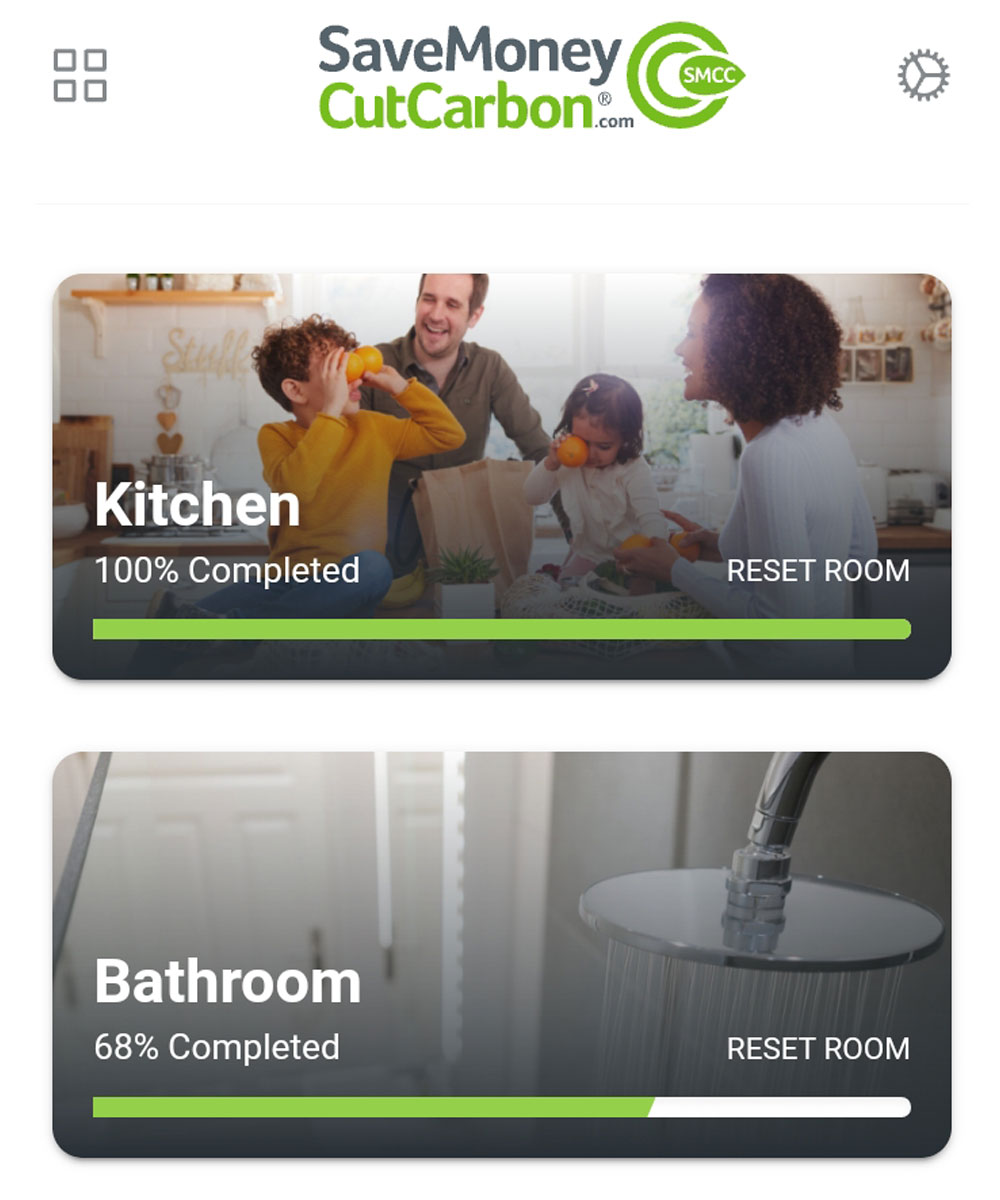Do apps designed to slash your energy bills work? We tested one to find out
News editor Jack Woodfield tests a new app claiming to save homeowners hundreds of pounds by making green swaps

Lowering energy bills is a priority for many households right now, so the launch of an app claiming to help families save hundreds of pounds is rather timely.
Energy price rises in October could see millions of households paying an extra £800 a year, and SaveMoneyCutCarbon reports that 39% of the nation haven’t taken any energy-saving measures. The app suggests this is because they don’t know where to start.
This is one of the central themes of the SaveMoneyCutCarbon Home app.
It does this through a Swap Shop, where you can learn which household items guzzle the most energy and the green alternatives that are available.
I was intrigued. Would it be user-friendly and persuasive enough to convince households to make green changes? I downloaded the app (available for iOS and Android) to find out.
How Does the App Work?
After first creating a SaveMoneyCutCarbon account I landed on the dashboard. Here you can choose to browse through a collection of ‘Learn & Save’ articles. These cover green swaps of the week, why certain appliances are so energy hungry and the benefits of going plastic free.
As you’d expect there’s lots of useful information. But while you can search for topics such as ‘energy efficient appliances’, it would benefit from having drop down menus to browse topics.
Get the Homebuilding & Renovating Newsletter
Bring your dream home to life with expert advice, how to guides and design inspiration. Sign up for our newsletter and get two free tickets to a Homebuilding & Renovating Show near you.
One of these articles is about how much electricity it costs to use a fan overnight.
According to the article, it costs 13p to run a 60W fan for eight hours overnight, so roughly £1 a week. I tested this calculation over two nights: the first spent with a 30W bedroom fan turned on, the second with it turned off. I checked my dual fuel E.ON SMETS1 smart meter on the first morning and saw a reading of 91p. On the second morning it was 86p.
Given the smaller wattage of the fan, this 5p saving pretty much aligns with the calculation for the 60W fan. And while spending 45p a week on using a fan overnight won't exactly break the bank, it's a useful stat to be aware of if you're using multiple fans in your house.

I was excited to visit the Swap Shop. You’re initially presented with a variety of rooms in a house (kitchen, living room etc) with a status of 0% completed. Upon clicking on each room, questions are displayed such as “Did you know that around 12% of your energy bill is from heating water?”. These snappy questions are certainly impactful and make you think about the various areas in the house where energy-saving tips are most useful.
You can either click X to move to the next fact, or find a swap. If you choose the latter, you are offered eco-friendly swaps you can make. For example, an ecosmart shower head that uses 60% less water and saves you 40% a year on your bills. It would be handy here if the app told you how it came to this calculation, or to which shower head the swap was compared. If you choose to make the swap, click See Your Next Swap and progress through the rest of the ways to make a room greener.
Once you’ve either selected your swaps or clicked X on the rest of the facts, you are presented with the very satisfying update that you have 100% completed that room. What is great about the app’s design is that you can of course choose to make certain purchases, but you can also use the Swap Shop to simply see where most of your home’s energy is being wasted.
I didn’t purchase any of the items, but if you do you’ll be able to visit what’s called an Impact Statement. Here you can see how purchasing your swaps will impact your energy bills and the planet; each swap will contribute to this. Again, though, this feels somewhat hypothetical and reliant on your existing appliances and items being less economical than the suggested swaps.
Who Will Benefit From the App?
My first thought when going through the Swap Shop was how impressive the array of information was in showing where our homes consume the most energy. That said, in some instances it would have benefitted from explaining certain calculations.
My second thought was how the 39% who didn’t know where to begin making their homes greener would benefit from these cheap, quick fixes.
Of course, if you do commit to buying some of swaps on the app, you might need to do a bit of DIY to replace a shower head or install a new tap, but swaps such as using reusable bamboo kitchen roll rather than traditional kitchen roll (a reported saving of £60 a year) are both clever and tool-free.
It can be daunting when we’re told that we need to replace our boilers with heat pumps to save money - and while this can be cost-effective in the long-term, it’s not always the ideal solution if you’ll struggle to afford the upfront costs.
This is why this app is so useful. If you’re looking for inexpensive ways to save money on your energy bills, it’s a trove of useful tips and products. You’ll learn a lot about where your home loses energy along the way, too.
Plus the app is free, so it's worth a look even if you don't choose to make any changes.
Jack has worked in journalism for over a decade and was the former News Editor of Homebuilding & Renovating between 2019 until 2023. In his time as News Editor he broke the most relevant and beneficial stories for self builders, extenders and renovators, including the latest news on the construction materials shortage, planning permission and green initiatives. In 2021 he appeared on BBC's The World at One to discuss the government's planning reforms.
He enjoys testing new tools and gadgets, and having bought his first home in 2013, he has renovated every room and recently finished a garden renovation.

